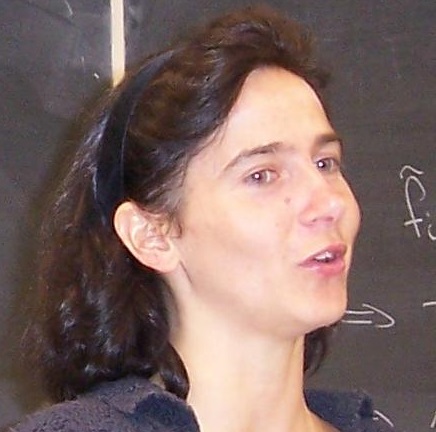9.E: Exercises for Chapter 9
( \newcommand{\kernel}{\mathrm{null}\,}\)
Calculational Exercises
1. Let (e1,e2,e3) be the canonical basis of R3 , and define
f1=e1+e2+e3, f2=e2+e3, f3=e3.
(a) Apply the Gram-Schmidt process to the basis (f1,f2,f3).
(b) What do you obtain if you instead applied the Gram-Schmidt process to the basis (f3,f2,f1)?
2. Let C[−π,π]={f:[−π,π]→R∣f is continuous} denote the inner product space of continuous real-valued functions defined on the interval [−π,π]⊂R, with inner product given by
⟨f,g⟩=∫π−πf(x)g(x)dx, for every f,g∈C[−π,π].
Then, given any positive integer n∈Z+, verify that the set of vectors
{1√2π,sin(x)√π,sin(2x)√π,…,sin(nx)√π,cos(x)√π,cos(2x)√π,…,cos(nx)√π} is orthonormal.
3. Let R2[x] denote the inner product space of polynomials over R having degree at most two, with inner product given by
⟨f,g⟩=∫10f(x)g(x)dx, for every f,g∈R2[x].
Apply the Gram-Schmidt procedure to the standard basis {1,x,x2} for R2[x] in order to produce an orthonormal basis for R2[x] .
4. Let v1,v2,v3∈R3 be given by v1=(1,2,1),v2=(1,−2,1), and v3=(1,2,−1).
Apply the Gram-Schmidt procedure to the basis (v1,v2,v3) of R3 , and call the resulting orthonormal basis (u1,u2,u3).
5. Let P⊂R3 be the plane containing 0 perpendicular to the vector (1,1,1). Using the standard norm, calculate the distance of the point (1,2,3) to P .
6. Give an orthonormal basis for null(T), where T∈L(C4) is the map with canonical matrix
(1111111111111111)
Proof-Writing Exercises
1. Let V be a finite-dimensional inner product space over F. Given any vectors u,v∈V , prove that the following two statements are equivalent:
(a)⟨u,v⟩=0
(b)‖u‖≤‖u+αv‖ for every α∈F.
2. Let n∈Z+ be a positive integer, and let a1,…,an,b1,…,bn∈R be any collection of 2n real numbers. Prove that
(n∑k=1akbk)2≤(n∑k=1ka2k)(n∑k=1b2kk)
3. Prove or disprove the following claim:
Claim. There is an inner product ⟨⋅,⋅⟩ on R2 whose associated norm ‖⋅‖ is given by the formula
‖(x1,x2)‖=|x1|+|x2|
for every vector (x1,x2)∈R2 , where |⋅| denotes the absolute value function on R.
4. Let V be a finite-dimensional inner product space over R. Given u,v∈V, prove that
⟨u,v⟩=‖u+v‖2−‖u−v‖24
5. Let V be a finite-dimensional inner product space over C. Given u,v∈V , prove that
⟨u,v⟩=‖u+v‖2−‖u−v‖24+‖u+iv‖2−‖u−iv‖24i.
6. Let V be a finite-dimensional inner product space over F, and let U be a subspace of V. Prove that the orthogonal complement U⊥ of U with respect to the inner product ⟨⋅,⋅⟩ on V satisfies
dim(U⊥)=dim(V)−dim(U).
7. Let V be a finite-dimensional inner product space over F, and let U be a subspace of V. Prove that U=V if and only if the orthogonal complement U⊥ of U with respect to the inner product ⟨⋅,⋅⟩ on V satisfies U⊥={0}.
8. Let V be a finite-dimensional inner product space over F, and suppose that P∈L(V) is a linear operator on V having the following two properties:
(a) Given any vector v∈V,P(P(v))=P(v). I.e., P2=P.
(b) Given any vector u∈null(P) and any vector v∈range(P),⟨u,v⟩=0.
Prove that P is an orthogonal projection.
9. Prove or give a counterexample: For any n≥1 and A∈Cn×n, one has
null(A)=(range(A))⊥.
10. Prove or give a counterexample: The Gram-Schmidt process applied to an an orthonormal list of vectors reproduces that list unchanged.
Contributors
- Isaiah Lankham, Mathematics Department at UC Davis
- Bruno Nachtergaele, Mathematics Department at UC Davis
- Anne Schilling, Mathematics Department at UC Davis
Both hardbound and softbound versions of this textbook are available online at WorldScientific.com.


